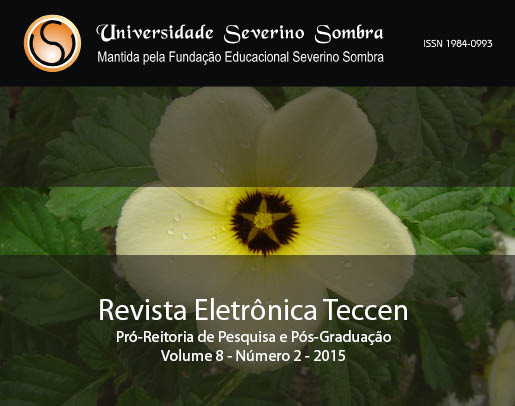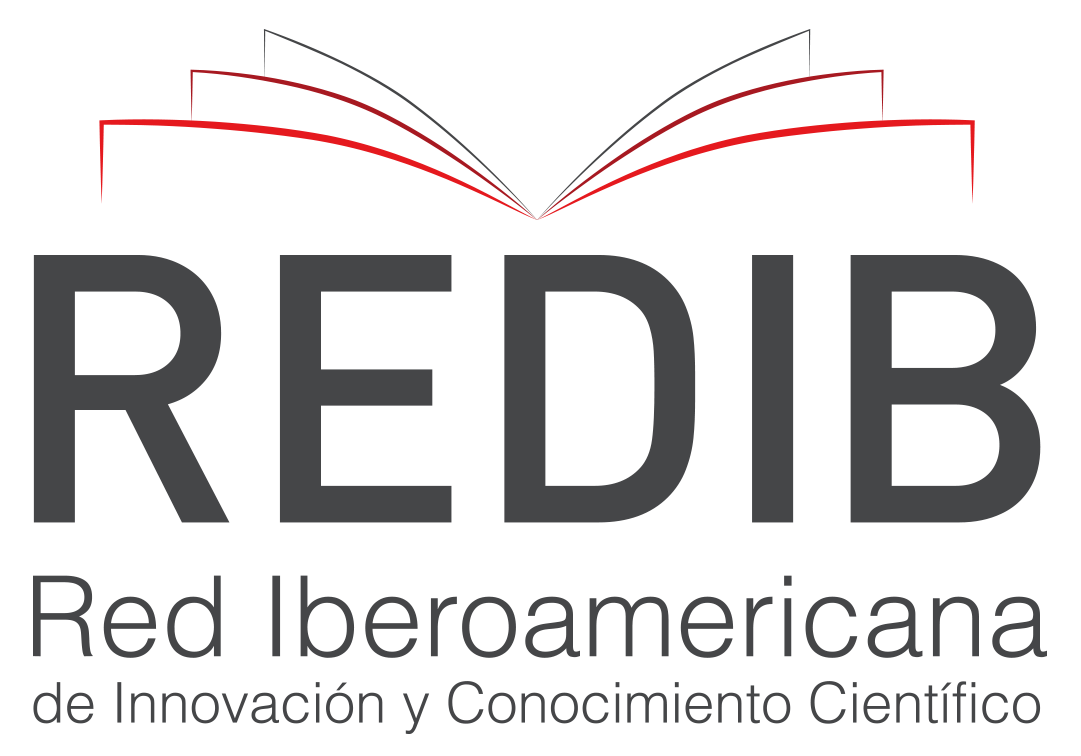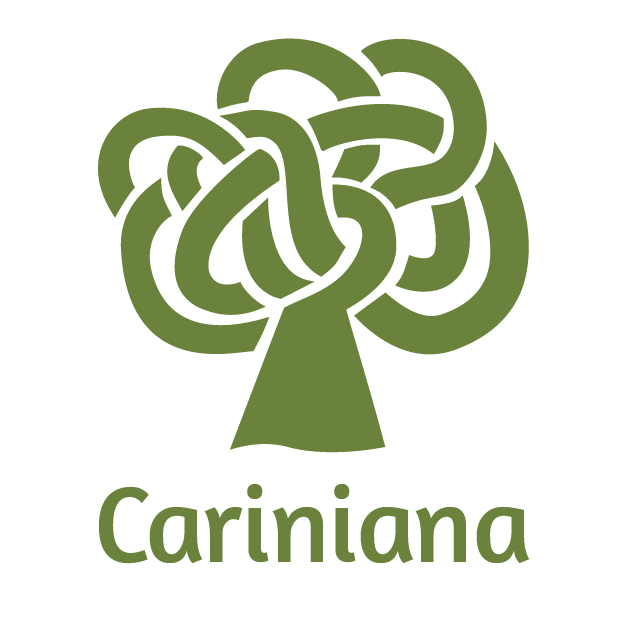Efficiency of the aquatic macrophyte salvinia auriculata in purification of urban effluents, validated by allium test (Allium Cepa L.)
DOI:
https://doi.org/10.21727/teccen.v8i2.280Palavras-chave:
Bioindicator. Effluent. Phytoremediation. Aquatic plants. Urban rivers.Resumo
This study aimed to evaluate the efficiency of the aquatic macrophytes Salvinia auriculata Aublet in purification of
polluted effluents, and evaluate macroscopically the efficiency of macrophytes using the Allium cepa Linnaeus (onion
test). Three collections were performed in September 2011, the first analysis was performed with water collected directly
from River Santa Catarina, the second was performed seven days after the contact of the effluent with the macrophytes,
and the third, fifteen days after the first analyses. The data were analyzed using Student’s t-test (p<0.05). To verify the
normality of the data was used the Kolmogorov-Smirnov test (p<0.05), for each sample (treatment). According to the
results of the Allium test, the aquatic macrophyte S. auriculata was efficient in the removing of pollutants agents after
fifteen days in contact with the effluent.
Downloads
Referências
Amaral, M. C. E., & Bittrich, V. (2002). Laguinhos. Mini-ecossitemas para
escolas e jardins. Ribeirão Preto: Ed. Holos. 89 p.
Barbério, A. (2008). Efeitos Citotóxicos e Genotóxicos no Meristema
Radicular de Allium cepa exposta à Água do Rio Paraíba do Sul - Estado
de São Paulo - Regiões de Tremembé e Aparecida. Dissertação (Doutorado)
- Curso de Ciências Biológicas, Departamento de Instituto de Biologia,
Universidade Federal de Campinas, Campinas-SP, 85 p..
Braga, B., Hespanhol, I., Conejo, J. G. L., Barros, M,T., Spencer, M.,Porto,
M., Nucci, N.; Juliano, N., & Eiger, S. (2002). Introdução à Engenharia
Ambiental. São Paulo: Prentice Hall.
Bianchini Jr., I., Pacobahyba, L. D., & Cunha-Santino, M. B. (2002). Aerobic
and Anaerobic decomposition of Montrichardia arborescens (L.) Schott.
Acta Limnologica Brasiliensia, 14(3), 27-34.
Camargo, A. F. M., Pezzato, M. M., & Henry-Silva, G. G. (2003). Fatores
limitantes à produção primária de macrófitas aquáticas. In: Thomaz, S.
M. e Bini, L. M. Ecologia e Manejo de Macrófitas Aquáticas. Editora da
Universidade Estadual de Maringá, p. 59 - 83.
Esteves, F. A. (1988). Fundamentos de Limnologia. 2ª ed. Rio de Janeiro:
Editora Interciência. p. 62-63.
Fiskesjö, G. (1985). The Allium test as a standard in environmental
monitoring. Hereditas,102(1), 99-112.
Fiskesjö, G. (1988). The Allium-test an alternative in environmental studies:
the relative toxicity of metal ions. Mutation Research,197(2), 243-260.
Grant, W. F. (1982). Chromosome aberration assays in Allium. Mutation
Research, 99(3), 273-291.
Giordano, G. (2004). Tratamentos e Controle de Efluentes Industriais.
Endereço: http://www.cepuerj.uerj.br, Maio. Acesso em: 03/05/2011.
Joyce, J. C. (1990). Practical uses of aquatic weeds. In: Pieterse, A. H.;
Murphy, K. J. (Ed.). Aquatic weeds: the ecology and management of nuisance
aquatic vegetation. Oxford: Oxford University Press, p. 274-291.
Pedralli, G. (1999). Plantas aquáticas: políticas, programas e projetos para
convervação no Brasil. In: Congresso Nacional de Botânica, 50, Blumenau.
Resumos: Sociedade Botânica Brasileir. p. 322 -323.
Pott, V. J., & Pott, A. (2002). Potencial de Uso de Plantas Aquáticas na
Despoluição da Água. Campo Grande: Embrapa.
Rank, J., & Nielsen, M. H. (1994). A modified Allium test as a tool in the
acreening of thegenotoxity of complex mistures. Hereditas, Lund, p. 49-53.
Salati Filho, E., Salati, E., Tauk-Tornisielo, S. M., & Salati, E. (1998).
Public water supply using constructed wetlands systems. In: International
Conference On Wetlands Systems For Water Pollution Control. 6 p. 89-166.
Skillicorn, P., Spira,W., & Journey, W. (1993). Duckweed aquaculture, a
new aquatic farmig system for developing countries. Washington: The Word
Bank. 74 p.
Tiburtius, E. R .L., Zamora, P. P. & Leal, E. S. (2004). Contaminação de
águas por BTXs e processos utilizados na remediação de sítios contaminados.
Química Nova, 27(3), 441-446.
Downloads
Publicado
Edição
Seção
Licença
Autores que publicam nesta revista concordam com os seguintes termos:
Autores mantém os direitos autorais e concedem à revista o direito de primeira publicação, com o artigo simultaneamente licenciado sob a Licença Creative Commons Creative Commons CC BY que permite o compartilhamento do trabalho com reconhecimento da autoria e publicação inicial nesta revista. Esta licença permite que outros distribuam, remixem, adaptem e criem a partir do seu trabalho, mesmo para fins comerciais, desde que lhe atribuam o devido crédito pela criação original. É a licença mais flexível de todas as licenças disponíveis. É recomendada para maximizar a disseminação e uso dos materiais licenciados.
Autores têm autorização para assumir contratos adicionais separadamente, para distribuição não-exclusiva da versão do trabalho publicada nesta revista (ex.: publicar em repositório institucional ou como capítulo de livro), com reconhecimento de autoria e publicação inicial nesta revista.
Ver o texto legal da licença em: https://creativecommons.org/licenses/by/4.0/












